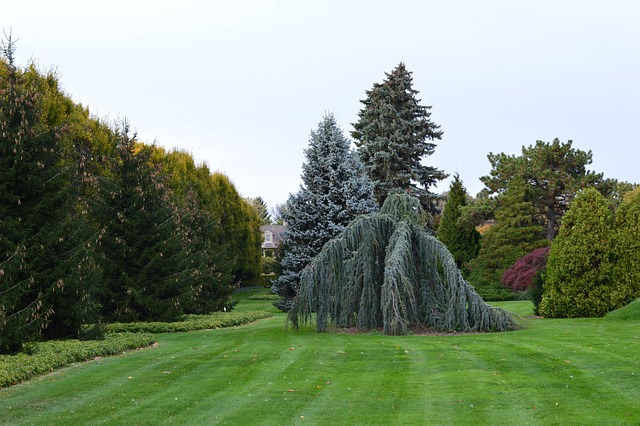A gratifying and fulfilling hobby that lets you put fresh, healthful produce on your table is vegetable gardening. Regardless of the size of your backyard or balcony, growing vegetables is a fun and accessible hobby for individuals of all ages and ability levels. I’ll take you step-by-step through the process of starting and tending to a plentiful vegetable garden in this comprehensive guide, from seed to dinner.
Choosing the right location for your vegetable garden
Choosing the appropriate site is the first step in developing a successful vegetable garden. In regions with at least six hours of direct sunlight every day, vegetables flourish. Choose a location in your yard where there are no big trees or other structures that could shade your garden. Take into account the proximity to a water supply as well. Make sure it’s convenient for you to water your garden on a regular basis. And finally, consider the local soil quality. Most veggies like their soil to be between a pH of 6 and 7, well-drained.
Preparing the soil for planting
It’s time to get the soil ready for your vegetable garden once you’ve selected the ideal spot. Eliminate any grass or weeds from the area first. Break up any clumps in the soil and remove any pebbles or trash by using a tiller or garden fork to soften the soil. Add organic materials to the soil, such as compost or well-rotted manure, after that. This will enhance the drainage and fertility of the soil. Using a tiller or garden rake, uniformly distribute the organic matter across the area and incorporate it into the soil. Lastly, use a rake to level the soil’s surface and get rid of any big stones or clumps.
Selecting the best vegetable seeds
Selecting the appropriate vegetable seeds is essential to a productive garden. When choosing seeds, take your local environment and growing circumstances into account. Certain veggies, like peppers and tomatoes, grow better in warmer climes and need a longer growing season. Certain plants, like spinach and lettuce, do better in colder climates and are best planted in the spring or fall. Don’t forget to consider your own tastes and the area you have in your yard. If your area is restricted, think about growing plants vertically or in compact types.
Starting seeds indoors
One excellent technique to get a jump start on the growing season is to start seeds inside. Start by adding seed-starting mix to tiny pots or seed trays. Before planting, moisten the soil and make sure the depth and spacing are according to the seed packet’s directions. Put the trays or pots somewhere warm and bright, like under a grow light or near a window. Make sure the soil is consistently damp but not soggy. To encourage uniform growth, turn the trays or pots frequently as the seedlings appear. The seedlings are prepared for transplanting into the garden once they have grown their second pair of genuine leaves.
Transplanting seedlings to the garden
It’s crucial to harden off your seedlings before moving them into the garden. Over the course of one to two weeks, the seedlings will be progressively exposed to external elements including wind and sunlight. Gradually increase the amount of time the seedlings are exposed to the outside by starting with a few hours every day in a covered area. The seedlings are prepared for planting in the garden once they have become accustomed to the outdoor environment. Gently plant each seedling in a hole that is just slightly bigger than its root ball. Fill in the hole with dirt, gently compacting it around the plant’s base. To aid in their establishment in their new environment, give the transplanted seedlings plenty of water.
Proper watering and fertilizing techniques
For your vegetable garden to be healthy and productive, fertilization and watering are necessities. The majority of vegetables need one inch of water per week, either from irrigation or rainfall. It is preferable to water deeply and seldom rather than frequently and shallowly to guarantee deep root growth. To reduce water wastage, apply water directly to the plant roots using a drip irrigation system or soaker hose. When it comes to fertilizing, mix in a balanced fertilizer prior to planting, paying attention to the rates specified on the package. Additionally, to offer a slow-release source of nutrients all through the growth season, think about utilizing compost or organic fertilizers.
Managing pests and diseases in the vegetable garden
If you don’t control pests and illnesses, they can cause havoc in your vegetable garden. It’s critical to take proactive steps in order to control and prevent these problems. Companion planting is among the best methods of pest deterrence. Some plants, like marigolds, draw beneficial insects while repelling destructive ones. Furthermore, maintaining good sanitation—which includes getting rid of weeds and plant debris—can stop the spread of illness. In the event that illnesses or pests do manifest, think about employing biological controls, insecticidal soap, hand-picking insects, or other organic pest control techniques. Keep an eye out for any indications of trouble with your plants and respond quickly to stop any damage.
Harvesting and preserving your bountiful vegetable harvest
It’s finally time to harvest your homegrown veggies—the moment you’ve been waiting for! The optimal flavor and quality are ensured by harvesting at the appropriate time. Every vegetable has distinct indicators of when it’s ready, such color, size, or texture. For precise instructions on when to harvest each crop, see the seed packs or other gardening publications. Think about canning, freezing, or drying your abundant harvest of vegetables to preserve the extra product. For veggies like tomatoes and green beans, canning is a terrific alternative; for peas, maize, and other delicate crops, freezing is a great option. For hot peppers or herbs, drying works best.
Delicious recipes and meals using homegrown vegetables
Now that your garden is overflowing with vegetables, it’s time to utilize them in the kitchen. When it comes to cooking delectable recipes and dinners with your fresh vegetables from the garden, the options are unlimited. There are so many ways to use veggies that are grown in your own backyard for everyday meals, ranging from easy salads and stir fries to substantial soups and casseroles. To truly appreciate the flavor and nutritional value of your produce, try experimenting with different flavors and cooking methods. Remember to share your favorite recipes with loved ones to encourage them to plant vegetable gardens of their own.
Conclusion
Growing a bumper crop of vegetables is a process that starts with a seed and concludes with a delicious dinner. You may establish a fruitful and profitable vegetable garden by following the instructions provided in this comprehensive book. Every step of the process, from picking the ideal spot to gathering and canning your own veggies, is necessary for a satisfying gardening endeavor. Prepare to go on a vegetable growing journey that will fuel your body and spirit by rolling up your sleeves and grabbing your planting supplies.


